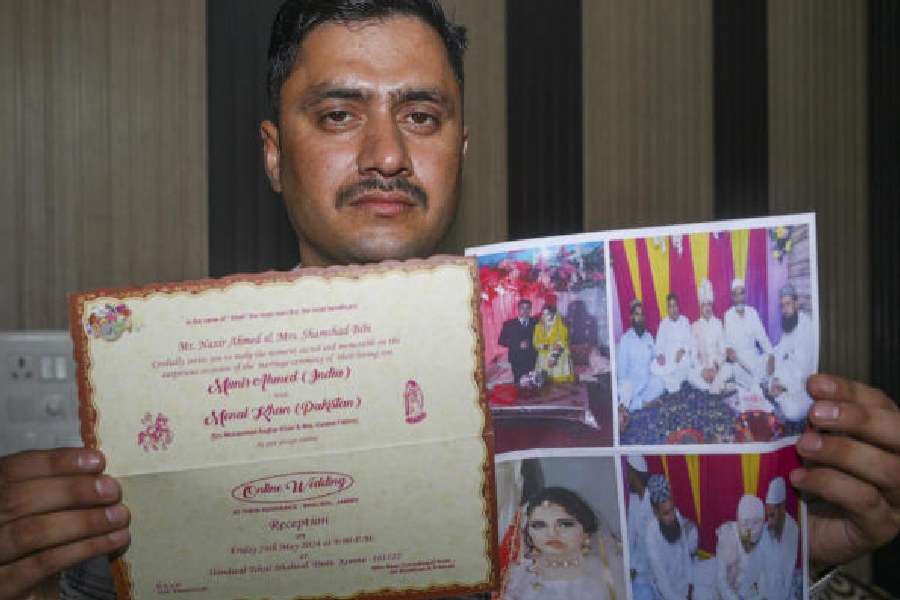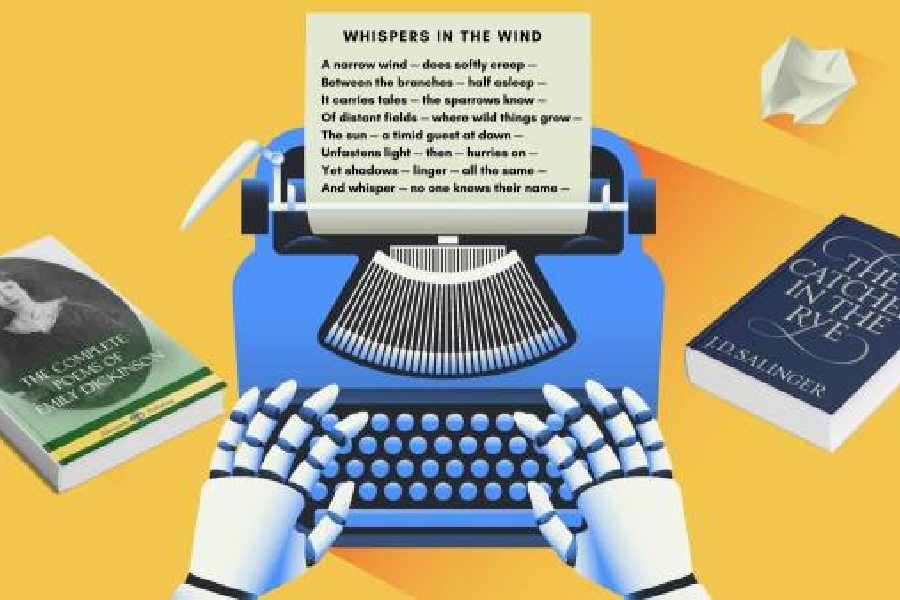
London, Sept. 17: The work of artists Rabindra and Amrit Singh is very much an integral part of British art, according to the eminent historian Simon Schama, who yesterday launched a major project, The Face of Britain, at the National Portrait Gallery in London.
The idea is to reflect Britain, past and present, through portraits, for which Schama had put together an exhibition with the help of the NPG's vast collection.
He has also done a five-part television series for BBC2, for which he has interviewed the Singh twins.
Just to complete his ambitious project, Schama has written a book, The Face of Britain: The Nation Through Its Portraits, which is being brought out by Viking/Penguin Random House.
He has dealt with his subject, not chronologically, but under five broad themes - "Power, People, Fame, Love and Self".
The twins, who were invited to yesterday's formal launch at the NPG, appear in the second episode of Schama's television series.
Asked by The Telegraph why he had included the twins, Schama began by addressing Rabindra and Amrit directly: "You speak very eloquently in the film."
The twins, who were born in the UK in 1966, now work together, dress in identical clothes and answer to each other's names.
This is all possibly a reaction to being forcibly separated by strict nuns when they were children at a Catholic convent school where they were the only Indians.
Quite often they work on the same painting, with Rabindra starting at one end and Amrit at the other. Their paintings resemble Mughal miniatures except the detail is usually quintessentially English - and frequently witty.
Schama, 70, who is one of Britain's most high profile historians, is known for his many books - A History of Britain, Simon Schama's Power of Art, The American Future: A History and The Story of the Jews - and many television series on art and history.#For The Face of Britain, Schama, 70, collaborated closely with experts at the NPG, whose chief curator, Tarnya Cooper, called him "one of the best brains in Britain".
At Christ's College, Cambridge, where Schama studied history, he was considered so brilliant that he was elected a Fellow at 21, the day after he got his BA - thereby shortening the minimum 10-year time lag.
Placing the twins, whose work has been familiar in the British Indian community for 20 years, in the context of the mainstream, Schama said yesterday: "The work the Singh twins are doing is very important. Their story is very, very eloquent, very, very important because they came through art school in the eighties in Liverpool."
There they were told it would be a mistake for them to pursue their art through the tradition of Mughal and Indian painting, Schama went on.
At the art college, Rabindra and Amrit were told in no uncertain terms that "they could not expect to be taken seriously unless they attached themselves to the modernist canon - such as (Jean Désiré Gustave) Courbet, (Édouard) Manet, (Pablo) Picasso, (Pieter) Cornelis "Piet" Mondriaan, and onwards".
"I cannot tell you how many ways in which they fought this," declared Schama. "And their work is an unforced union between their traditional culture and the life they lead fully of Liverpool and fully of Britain."
He referred to their efforts as "actually a wonderful resistance to cultural compartmentalisation and that is true of other heroes not just of our own time".
He gave the example of William Hogarth's seminal The Analysis of Beauty, which he considered "the greatest book on art that has been written in English".
Comparing past English giants with the Singh twins, Schama explained: "What Hogarth is saying is, 'Enough with the grand tour and Roman statues. Look around you in London. Our subject is now and our subject is all of our people.' So without being starry eyed about it, what is extraordinary about portraiture in this country is that it of a piece with our ethnic and cultural variety."
Schama made an unexpected emotional point: "You know you are talking to a Jew - my dad made me memorise Shakespeare when I was quite young because he, rather like Rabindra and Amrit, refused to be compartmentalised between a Jewish East End and the great tradition of English literature."
The twins told this newspaper that Schama had interviewed them about a number of paintings, including 1984, which was about the storming of the Golden Temple in Amritsar; and Painting the Town Red, which was partly about football and Liverpool.
The sisters said their "understanding is that he feels our work is very reflective of what Britain is today and the diversity of issues that we deal with".
They agreed that "we have had a lot of recognition for our work". Rabindra and Amrit were also given an honorary doctorate of fine art by Chester University earlier this year for their "outstanding contribution to British art".#The problem was getting recognised as mainstream artists.
The twins said they were "sure someone of Simon's calibre and respect and knowledge of art having something positive to say about our being representative of the face of Britain will be a tremendous boost to the way people perhaps view our work".
Rabindra and Amrit added that "hopefully, they won't look at it on the surface and dismiss it as being other than what British art is generally perceived to be - or push us back into that ethnic pigeon hole that we struggled to get out of in the early days".










